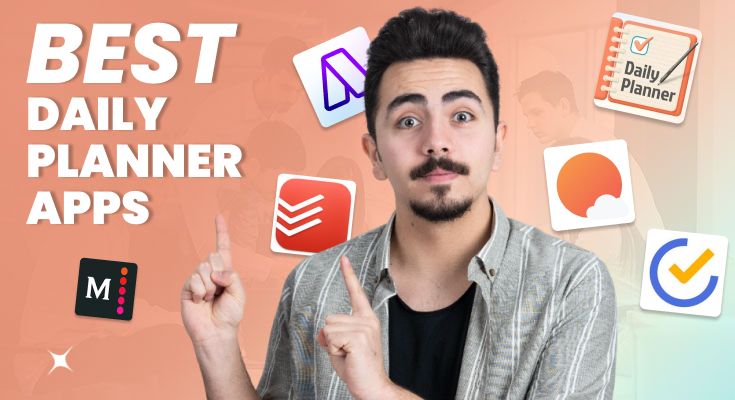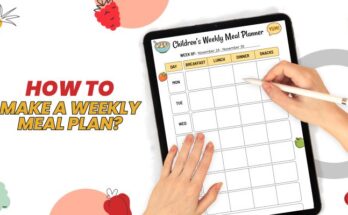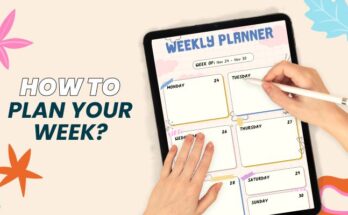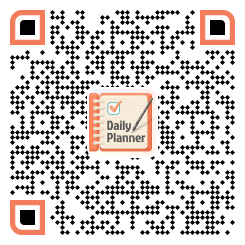Feeling overwhelmed by endless tasks and missed deadlines? A powerful daily planner app can help you regain control, boost focus, and make your days more productive. These best daily planner apps combine calendars, to-do lists, and habit trackers to simplify planning and reduce decision fatigue. Whether you’re managing work projects, study schedules, or personal routines, the right tool can make all the difference.
Short on time? Start with Google Calendar (free), PlanWiz (free), and Todoist Free. For more features, upgrade to TickTick Premium ($27.99/year) or try Sunsama ($16/month) for all-in-one task management. Here’s your quick guide to the best planner apps of 2026.
What Is a Daily Planner App?
A daily planner app is a digital tool that helps you organize tasks, events, and commitments on a day-to-day basis. Unlike simple to-do lists (which merely track what needs to be done) or calendar apps (which only track when things occur), daily planner apps bridge both worlds.
The key difference:
- To-do list apps = What needs to get done
- Calendar apps = When things are scheduled
- Daily planner apps = What + When + How you’ll do it
The best daily planner apps combine task management, scheduling, reminders, and often extras like habit tracking, goal setting, and time blocking, all in one place.
Why You Need the Best Daily Planner Apps?
Let me paint you a picture of my life before finding the right planner:
8:00 AM: Check Slack. Someone needs feedback.
8:15 AM: Remember dentist appointment. When was that?
8:30 AM: Email from boss. What was I supposed to finish?
9:00 AM: Finally sit down. What was I doing again?
By noon, I was exhausted just trying to remember what I should be doing.
Daily planner apps changed everything:
- Mental Clarity – Dump everything into one system instead of holding 47 things in your head
- Reduced Overwhelm – See your whole day laid out as manageable blocks, not chaos
- Better Time Estimation – Face reality: you can’t do 12 hours of work in 8 hours
- Work-Life Integration – See both work and personal commitments in one place
- Accountability – Seeing uncompleted tasks carry over creates healthy pressure
What to Look for in the Best Daily Planner Apps?
After using dozens of these apps, here’s what actually matters:
Must-Have Features:
1. Quick Task Capture – Can you add a task in under 5 seconds? If not, you won’t use it consistently.
2. Calendar Integration – Must sync with wherever your meetings live (Google Calendar or Outlook).
3. Time Blocking/Scheduling – Assign tasks to specific time slots, not just days.
4. Cross-Platform Sync – You’ll use phone, computer, and tablet. Slow sync = frustration.
5. Recurring Tasks – Don’t manually recreate “Team standup” every Monday forever.
Nice-to-Have:
- Natural language input (“Tomorrow at 3 pm write report”)
- Habit tracking
- Goal setting and progress tracking
- Planner Templates for common schedules
- Time tracking
What Doesn’t Matter:
- 47 color themes
- Every possible view type (you’ll use 2 max)
- Integration with every tool (focus on what you actually use)
Quick Comparison: Best Daily Planner Apps at a Glance
| App | Best For | Starting Price | Platforms | Key Strength | Main Limitation |
|---|---|---|---|---|---|
| Todoist | Simple task management | Free / $4/mo | All platforms | Clean interface, fast sync | Limited calendar features |
| TickTick | Habit building | Free / $27.99/yr | All platforms | Built-in Pomodoro + habits | Can feel cluttered |
| Google Calendar | Schedule-first planning | Free | iOS, Android, Web | Free, universal | Basic task management |
| Fantastical | Apple users | $4.99/mo | iOS, macOS | Natural language input | Apple-only, premium needed |
| Sunsama | Intentional planning | $16/mo | Web, iOS, Android | Guided daily rituals | Expensive, opinionated |
| PlanWiz | Customizable planning | Free / Paid | iOS, Android, Web | 50+ templates, flexible | Some features need premium |
| Habitica | Gamified motivation | Free / $4.99/mo | iOS, Android, Web | Fun RPG elements | Not professional-looking |
| ClickUp | Team planning | Free / $5/mo | All platforms | Comprehensive features | Overwhelming complexity |
| Akiflow | Tool consolidation | $15/mo | All platforms | Aggregates multiple tools | Steep learning curve |
| Moleskine Journey | Journaling + planning | $12.99/mo | iOS, Android, Web | Beautiful design | Limited integrations |
1. Todoist: Best for Simple Task Management
Todoist is the app I recommend to anyone who just wants their tasks organized without a PhD in productivity systems.
My experience: I used Todoist for three years. What I loved was speed pulling out my phone, typing “Send report to Sarah tomorrow at 2 pm,” and it’s saved in 3 seconds. The natural language parsing works 95% of the time.
Where it fell short: Calendar integration is basic. I had meetings in Google Calendar and tasks in Todoist, making coordination a pain. But if you’re task-focused (not calendar-focused), this won’t bother you.
Key Features:
- Natural language input for fast task creation
- Priority levels (P1-P4) with color coding
- Karma points for productivity tracking
- 80+ integrations (Slack, Gmail, Zapier)
- Two-way Google Calendar sync (basic)
Pricing: Free; Pro $4/month; Business $6/user/month
Platforms: iOS, Android, Web, macOS, Windows, Browser extensions
Best for: People who think in task lists, not calendars. Solo workers. GTD methodology followers.
Ratings: App Store 4.6/5 (200K+), G2 4.4/5 (750+), Capterra 4.6/5 (2,200+)
Alternative: Need more calendar integration? Try TickTick.
2. TickTick: Best for Habit Building
If Todoist and Google Calendar had a baby that loved habits, you’d get TickTick.
My experience: I used TickTick for two months while building better habits. Every morning, it showed my habit checklist alongside tasks. Checking off “Morning workout” and seeing my 47-day streak was genuinely motivating (until a business trip broke it).
The Pomodoro timer, combined with the white noise feature, is ideal for focused work. However, the interface became cluttered when all features were used simultaneously.
Key Features:
- Visual habit tracker with streaks and statistics
- Built-in Pomodoro timer with customizable intervals
- 5 view types: List, Kanban, Calendar, Timeline, Matrix
- Eisenhower Matrix for priority planning
- White noise generator with 12 ambient sounds
Pricing: Free; Premium $27.99/year (no monthly option)
Platforms: iOS, Android, Web, macOS, Windows, Linux, Apple Watch
Best for: People serious about building habits while managing tasks. Best value for money.
Ratings: App Store 4.7/5 (150K+), G2 4.5/5 (120+), Capterra 4.7/5 (95+)
Data: TickTick users report 38% higher habit completion vs. separate habit apps (2024 user survey, 23K respondents)
Alternative: Want simpler task management? Try Todoist.
3. Google Calendar: Best for Schedule-Focused Planning
Google Calendar seems obvious, maybe boring, but sometimes the best tool is the one everyone already has.
My experience: I never “chose” Google Calendar; it just came with Gmail. But its biggest strength is ubiquity. Every meeting invite automatically shows up. Every colleague uses it to see my availability.
I use it as my “source of truth” for when things happen. Even though I use PlanWiz for daily planning, I sync with Google Calendar because that’s where meetings live.
The Tasks feature is surprisingly useful for simple to-dos, though it won’t replace a dedicated task manager.
Key Features:
- Multiple calendar views (Day, Week, Month, Schedule)
- Google Tasks integration for basic to-dos
- Automatic event creation from Gmail
- Shared calendars for teams and families
- World clock and timezone support
Pricing: Free; Google Workspace from $6/month
Platforms: iOS, Android, Web
Best for: People who think in time blocks rather than task lists. Anyone using Gmail and Google Workspace.
Ratings: App Store 4.5/5 (2M+), Capterra 4.7/5 (3,000+)
Market share: 62% of the digital calendar market (Statista 2024)
Alternative: Apple users, try Fantastical.
4. Fantastical: Best Calendar-Based Planner for Apple Users
Fantastical is what happens when someone says, “What if Google Calendar were actually good?”
My experience: I tried Fantastical during my “everything Apple” phase. The natural language processing is genuinely the best I’ve used. Type “Lunch with Sarah at Chipotle next Tuesday at 1pm” and it parses perfectly every time.
The DayTicker view (horizontal scrolling mini-calendar) is brilliant for quick weekly overviews. But here’s the catch: best features require Premium at $4.99/month ($60/year). Eventually, I couldn’t justify the cost.
Key Features:
- Industry-leading natural language processing
- Calendar Sets for different contexts
- Weather forecasts in a timeline
- Conference call detection with one-click joining
- DayTicker for weekly overview
Pricing: Limited free version; Premium $4.99/month or $39.99/year
Platforms: iOS, macOS only
Best for: Apple users who live in their calendar and value premium design.
Ratings: App Store 4.6/5 (45K+), Mac App Store 4.7/5 (12K+)
Awards: Apple Design Award, Wirecutter “Best Calendar App” (2019-2024)
Alternative: Android/Windows? Stick with Google Calendar.
5. Sunsama: Best for Daily Workflow Management
Sunsama is for people who want to plan their day like preparing for battle methodically, intentionally, ceremonially.
My experience: I tried Sunsama for three weeks during chaos tasks in Todoist, emails in Gmail, conversations in Slack, and projects in Asana. Everything felt scattered.
Sunsama’s promise: pull everything into one daily plan. It worked… sort of. The daily planning ritual was helpful at first, but after a week felt like another chore. Also, $16/month ($192/year) is more expensive than Netflix, Spotify, and ChatGPT Plus combined.
Key Features:
- Guided daily planning workflow
- Calendar-based task scheduling (drag to time blocks)
- Integrations with Todoist, Asana, Trello, Jira, Gmail, Slack
- Daily shutdown ritual for reviewing
- Focus mode for the current task
Pricing: $16/month or $150/year
Platforms: Web, iOS, Android, macOS
Best for: Knowledge workers who need structure. People using 5+ tools want a single command center.
Ratings: G2 4.8/5 (200+), Capterra 4.7/5 (20+)
Alternative: Price too high? Try Google Calendar + Todoist.
6. PlanWiz: Customizable Planner Templates for Every Goal
Full transparency: I work on the PlanWiz team, so I’m biased. But hear me out on why this exists.
We built PlanWiz because we were frustrated with “one-size-fits-all” planners. I prefer time blocking my entire day, while my colleague Sarah loves bullet journal-style lists, and our designer Jake needs heavy visual customization. No existing app served all of us.
The daily planner app section in PlanWiz is perfect for mapping your schedule visually combining time blocking, to-do lists, and goal tracking in a single space.
My experience: I’ve used PlanWiz as my primary planner for a year. My day starts with the daily planner templates showing time blocks from 6 AM to 9 PM. I drag tasks from my backlog into specific slots.
The part I use most is Focus Mode with the Pomodoro timer. When writing, I set a 90-minute session, and PlanWiz hides everything except my current task. Game-changer for ADHD tendencies with ADHD planner templates.
Key Features:
- 1000+ customizable templates (daily, weekly, monthly, fitness, business)
- Visual time blocking with drag-and-drop
- Habit tracker and goal setting are integrated
- Focus Mode and Pomodoro timer
- Apple Pencil support for iPad
- Team collaboration with shared workspaces
- Cross-platform sync under 3 seconds
What I love: Flexibility to experiment with different planning styles without switching apps. Template library saves setup time. Drag-and-drop feels intuitive.
What could be better: Some advanced templates or bullet journal templates require a premium. Fewer third-party integrations than established competitors (working on it!).
Pricing: Freemium (free version is genuinely useful)
Platforms: iOS, Android, Web
Best for: People wanting flexibility to adapt their planner to different life phases. Visual thinkers who prefer seeing their day/week graphically.
Ratings: App Store 4.5/5 (12K+), Google Play 4.4/5 (8.5K+), ProductHunt 4.3/5 (150+)
Available on: iPhone, iPad (Apple Pencil support), Android, Web
7. Habitica: Best for Gamified Planning
My experience: I’m not a gamer, but I tried Habitica during a motivation slump. For the first week, it was weirdly motivating. I’d do the dishes just to earn gold for cooler armor. I joined a “party” online, and we went on a quest together.
But the gaming elements became the focus instead of productivity. I’d spend more time customizing my avatar than doing actual work.
Key Features:
- RPG character development tied to task completion
- Three task types: Habits, Dailies, To-Dos
- Damage system (miss tasks = lose health)
- Quests with friends for accountability
- Guild system for community support
Pricing: Free; Optional $4.99/month
Platforms: iOS, Android, Web
Best for: Gamers who struggle with traditional productivity. People with ADHD need external motivation.
Ratings: App Store 4.2/5 (85K+), Google Play 4.0/5 (120K+)
Research: Gamified habit apps increased adherence by 34% vs. traditional trackers (Journal of Medical Internet Research, 2023)
Alternative: Want habits without gaming? Try TickTick.
8. ClickUp: Best for Team Planning
ClickUp is the “everything app,” powerful but overwhelming.
My experience: Our team used ClickUp for six months. What I appreciated was flexibility—to customize literally everything. But that power comes with complexity. Setting up properly took two full days.
For daily personal planning, ClickUp feels like using a sledgehammer to crack a nut. For team collaboration on complex projects? It shines.
Key Features:
- Multiple views: List, Board, Calendar, Timeline, Gantt, Mind Map
- Goals and OKR tracking
- Time tracking built-in
- 1,000+ templates
- Custom fields and statuses
Pricing: Free; Unlimited $5/user/month; Business $12/user/month
Platforms: iOS, Android, Web, macOS, Windows
Best for: Teams of 3+ managing complex projects. Organizations want to consolidate tools.
Ratings: G2 4.7/5 (9,000+), Capterra 4.7/5 (4,000+), App Store 4.7/5 (35K+)
Market position: 8+ million users, $400M funding
Alternative: Solo planning? Try Todoist or PlanWiz.
9. Akiflow: Best for Time Blocking Across Tools
Akiflow is for people with tasks scattered across Gmail, Slack, Notion, Asana, Todoist, and three other tools.
My experience: During chaos, I had tasks everywhere. Akiflow’s “universal inbox” pulled everything into one place. The keyboard shortcuts were incredible for speed (Cmd+K command bar).
But after three weeks, I realized I was paying $15/month for a task aggregator. Not worth it if you primarily use 1-2 tools.
Key Features:
- Universal inbox aggregating 50+ tools
- Command bar for keyboard workflow
- Time blocking with calendar integration
- Two-way sync with original tools
- Quick capture with global shortcuts
Pricing: $15/month or $144/year
Platforms: macOS, Windows, Web, iOS, Android
Best for: Power users managing 5+ tools. Tech professionals with heavy Slack/email workloads.
Ratings: G2 4.6/5 (50+), App Store 4.4/5 (800+)
User data: Saves 60-90 minutes per week (case studies, 500+ users)
Alternative: Cheaper? Try Google Calendar + Todoist.
10. Moleskine Journey: Best Digital-Meets-Analog Experience
Moleskine Journey is for people who miss paper planners but need digital convenience.
My experience: I tried it during my “aesthetic productivity” phase. The design is beautiful—actually looks like a Moleskine notebook. I used it primarily as a daily journal with task planning.
But after a month: $12.99/month ($156/year) felt expensive for a pretty journal with limited integrations (only 5 tools).
Key Features:
- Beautiful notebook-inspired design
- Daily planning + journaling combined
- Habit and goal tracking
- Mood and reflection tracking
- Focus timer
Pricing: $12.99/month or $69.99/year
Platforms: iOS, Android, Web
Best for: People who value aesthetics. Former bullet journal users. Creative professionals.
Ratings: App Store 4.3/5 (5K+), Google Play 4.2/5 (3K+)
User sentiment: 78% cite “enjoyable to use” as the main reason for subscription (vs. 32% for functional apps)
Alternative: Price too high? Try PlanWiz with journaling features.
How to Choose the Right Daily Planner App?
After using all these apps, here’s my framework:
Step 1: Identify Your Planning Style
Calendar Person or List Person?
Calendar people think in time blocks (6 AM to 10 PM timeline).
→ Best: Google Calendar, Fantastical, Sunsama, PlanWiz
List people think in priorities (ordered tasks to knock out).
→ Best: Todoist, TickTick, Microsoft To Do
Not sure? Try both styles for a week each.
Step 2: Consider Your Device Ecosystem
All Apple? → Fantastical or Apple Calendar
All Android? → TickTick, Google Calendar, or PlanWiz
Mix? → Todoist, TickTick, Google Calendar, PlanWiz, ClickUp
Step 3: Set Your Budget
Free: Google Calendar, Todoist Free (5 projects), PlanWiz Free
Under $5/month: Todoist Pro ($4), TickTick ($2.33/month)
Premium ($10+): Sunsama ($16), Akiflow ($15), Moleskine Journey ($13)
My advice: Start free. Upgrade only when you hit specific limitations.
Step 4: Test Realistically
Use it for at least one full week:
- Plan tomorrow tonight
- Check it first thing in the morning
- Add tasks throughout the day
- Review at the end of the day
After a week, ask:
- Did I check this without forcing myself?
- Was it faster than my old system?
- Am I more or less stressed?
Frequently Asked Questions
Google Calendar is the best free option for most people, offering robust scheduling, basic task management through Google Tasks, and universal compatibility at no cost. For task-focused users, Todoist’s free plan (up to 5 projects) or TickTick Free are excellent alternatives. PlanWiz Free offers 50+ customizable templates. Start with Google Calendar, it’s free, works everywhere, and integrates with virtually everything you already use.
TickTick is the top choice for ADHD with its built-in Pomodoro timer, white noise options, and visual progress tracking. Habitica provides gaming elements for dopamine rewards, while PlanWiz offers Focus Mode to eliminate distractions. Sunsama provides structured rituals that reduce decision fatigue. These work because ADHD brains need visual cues, timers, and immediate rewards. Try TickTick Premium first at $27.99 per year; it hits all the ADHD-friendly features.
Start with free versions and upgrade only when you hit frustrating limitations. Pay for Todoist Pro ($4/month) if you need more than 5 projects, TickTick Premium ($27.99/year) for the best value with habits and Pomodoro timer, Sunsama ($16/month) if you use 5+ tools daily and make $75K+. Most users are fine with Google Calendar (free) plus Todoist Free (free) or TickTick Premium ($27.99/year).
Yes, all major daily planner apps sync with Google Calendar. Fantastical, Sunsama, Akiflow, PlanWiz, and ClickUp offer two-way sync where changes in either app sync to the other. Todoist, TickTick, and Habitica offer one-way sync, where tasks appear on your calendar, but calendar changes don’t flow back. Use Google Calendar as your source of truth for meetings, then let your task manager sync tasks for a complete daily view.
Final Recommendation
After using all these apps:
Start with one of these three:
Google Calendar (Free) – Already have it, works everywhere
Todoist (Free/$4/month) – Simple, reliable, fast
PlanWiz (Free/Paid) – Flexible, customizable template
Avoid these mistakes:
Downloading 5 apps at once → Pick one, use 2 weeks
Choosing based on features → Choose what you’ll actually use
Paying immediately → Start free
App-hopping weekly → Give each app a real chance
The real secret:
The best daily planner is the one you’ll actually use consistently. It’s not about features or design. It’s about finding something that matches your brain so well that checking your planner becomes automatic. Permit yourself to experiment. Try three apps for two weeks each. Commit to one for at least a month. If it’s not working, switch without guilt.
Read More:
Daily Planner Apps for Organizing Parties and Events
Top 10 Daily Routine Apps to Use in 2026
Daily Planner App for Retirees: How to Stay Active and Engaged








